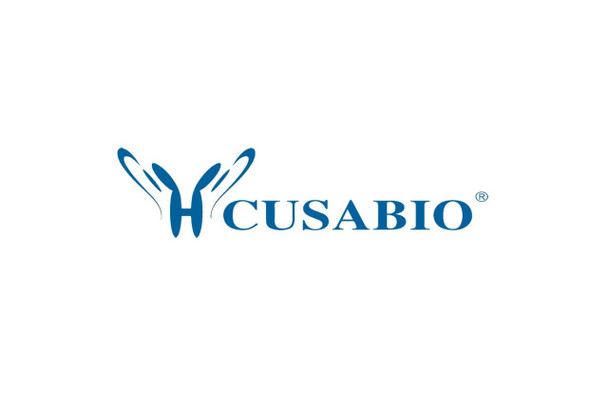Cusabio Human Recombinants
Recombinant Human Low-density lipoprotein receptor-related protein 4 (LRP4), partial | CSB-YP013099HU
- SKU:
- CSB-YP013099HU
- Availability:
- 25 - 35 Working Days
Description
Recombinant Human Low-density lipoprotein receptor-related protein 4 (LRP4), partial | CSB-YP013099HU | Cusabio
Alternative Name(s): Multiple epidermal growth factor-like domains 7
Gene Names: LRP4
Research Areas: Others
Organism: Homo sapiens (Human)
AA Sequence: YRHKKSKFTDPGMGNLTYSNPSYRTSTQEVKIEAIPKPAMYNQLCYKKEGGPDHNYTKEKIKIVEGICLLSGDDAEWDDLKQLRSSRGGLLRDHVCMKTDTVSIQASSGSLDDTETEQLLQEEQSECSSVHTAATPERRGSLPDTGWKHERKLSSESQV
Source: Yeast
Tag Info: N-terminal 6xHis-tagged
Expression Region: 1747-1905aa
Sequence Info: Cytoplasmic Domain
MW: 19.9 kDa
Purity: Greater than 90% as determined by SDS-PAGE.
Relevance: Mediates SOST-dependent inhibition of bone formation. Functions as a specific facilitator of SOST-mediated inhibition of Wnt signaling. Plays a key role in the formation and the maintenance of the neuromuscular junction (NMJ), the synapse between motor neuron and skeletal muscle. Directly binds AGRIN and recruits it to the MUSK signaling complex. Mediates the AGRIN-induced phosphorylation of MUSK, the kinase of the complex. The activation of MUSK in myotubes induces the formation of NMJ by regulating different processes including the transcription of specific genes and the clustering of AChR in the postsynaptic membrane. Alternatively, may be involved in the negative regulation of the canonical Wnt signaling pathway, being able to antagonize the LRP6-mediated activation of this pathway. More generally, has been proposed to function as a cell surface endocytic receptor binding and internalizing extracellular ligands for degradation by lysosomes.
Reference: "Low density lipoprotein receptor-related protein 10." Ishikawa K., Fujimoto H., Kim D., Saeki S. Submitted (MAY-2002)
Storage: The shelf life is related to many factors, storage state, buffer ingredients, storage temperature and the stability of the protein itself. Generally, the shelf life of liquid form is 6 months at -20?/-80?. The shelf life of lyophilized form is 12 months at -20?/-80?.
Notes: Repeated freezing and thawing is not recommended. Store working aliquots at 4? for up to one week.
Function: Mediates SOST-dependent inhibition of bone formation. Functions as a specific facilitator of SOST-mediated inhibition of Wnt signaling. Plays a key role in the formation and the maintenance of the neuromuscular junction (NMJ), the synapse between motor neuron and skeletal muscle. Directly binds AGRIN and recruits it to the MUSK signaling complex. Mediates the AGRIN-induced phosphorylation of MUSK, the kinase of the complex. The activation of MUSK in myotubes induces the formation of NMJ by regulating different processes including the transcription of specific genes and the clustering of AChR in the postsynaptic membrane. Alternatively, may be involved in the negative regulation of the canonical Wnt signaling pathway, being able to antagonize the LRP6-mediated activation of this pathway. More generally, has been proposed to function as a cell surface endocytic receptor binding and internalizing extracellular ligands for degradation by lysosomes. May play an essential role in the process of digit differentiation (By similarity).
Involvement in disease: Cenani-Lenz syndactyly syndrome (CLSS); Sclerosteosis 2 (SOST2); Myasthenic syndrome, congenital, 17 (CMS17)
Subcellular Location: Cell membrane, Single-pass type I membrane protein
Protein Families: LDLR family
Tissue Specificity: Expressed in bone; present in osteoblasts and osteocytes. No expression is observed in osteoclast. Expressed in several regions of the brain.
Paythway:
Form: Liquid or Lyophilized powder
Buffer: If the delivery form is liquid, the default storage buffer is Tris/PBS-based buffer, 5%-50% glycerol. If the delivery form is lyophilized powder, the buffer before lyophilization is Tris/PBS-based buffer, 6% Trehalose, pH 8.0.
Reconstitution: We recommend that this vial be briefly centrifuged prior to opening to bring the contents to the bottom. Please reconstitute protein in deionized sterile water to a concentration of 0.1-1.0 mg/mL.We recommend to add 5-50% of glycerol (final concentration) and aliquot for long-term storage at -20?/-80?. Our default final concentration of glycerol is 50%. Customers could use it as reference.
Uniprot ID: O75096
HGNC Database Link: HGNC
UniGene Database Link: UniGene
KEGG Database Link: KEGG
STRING Database Link: STRING
OMIM Database Link: OMIM










